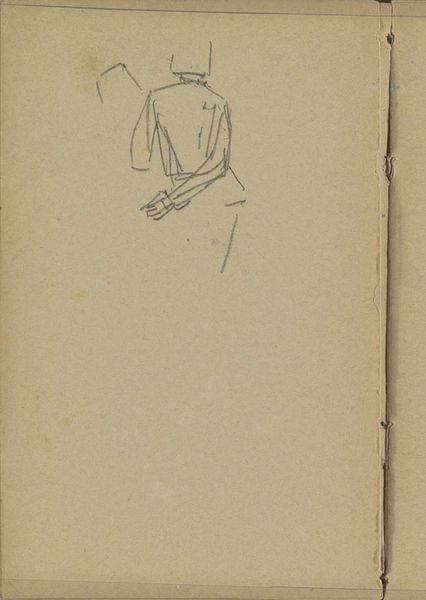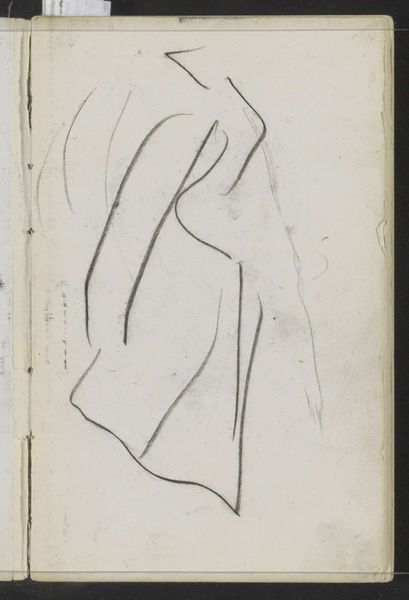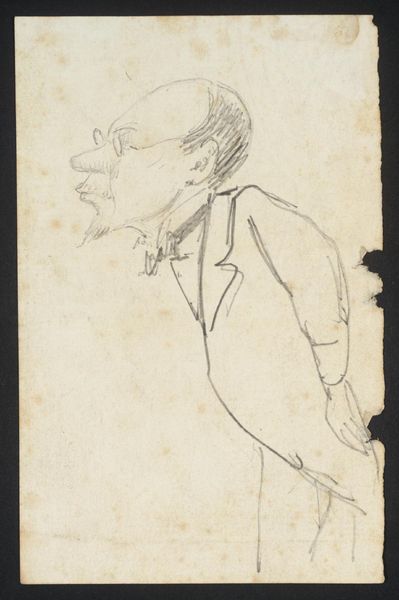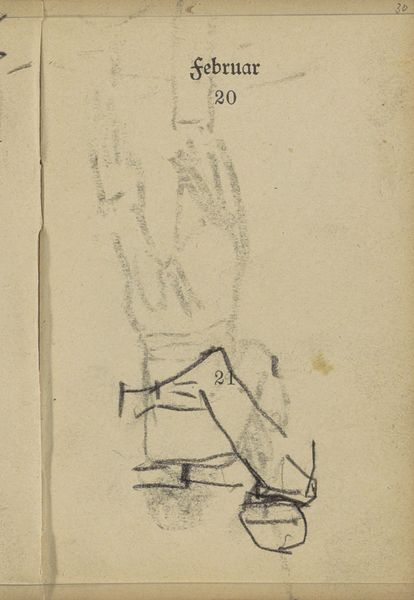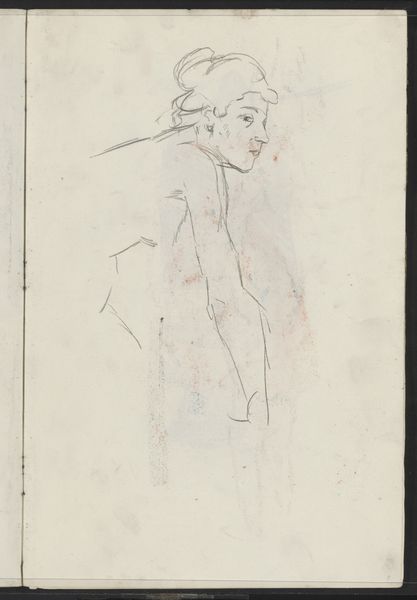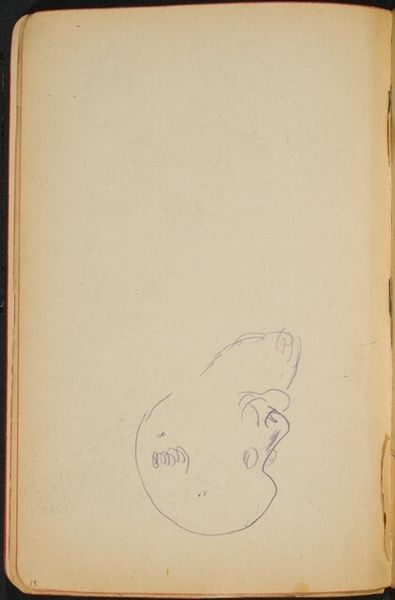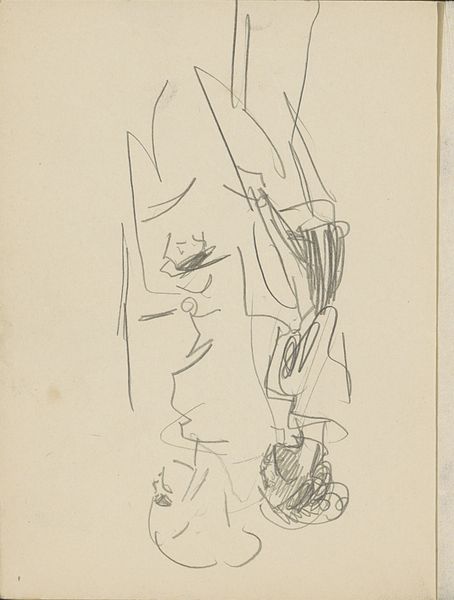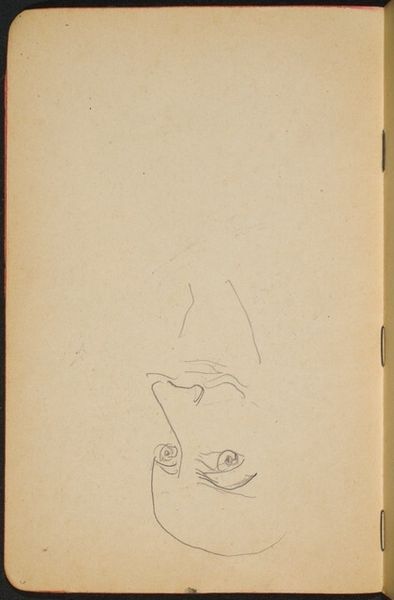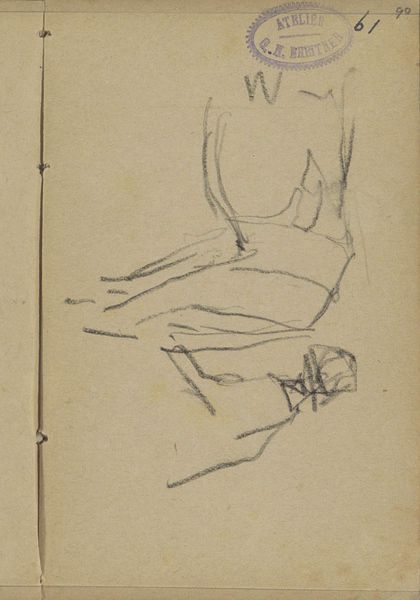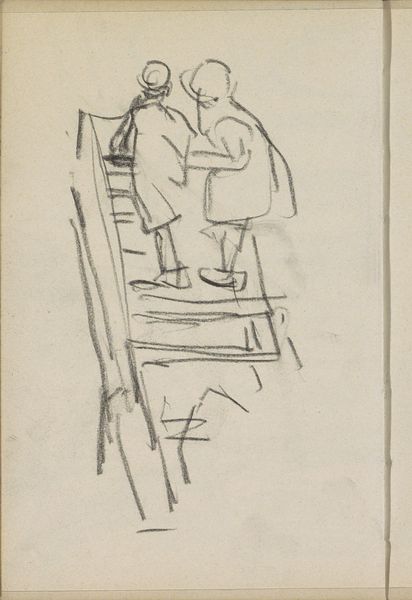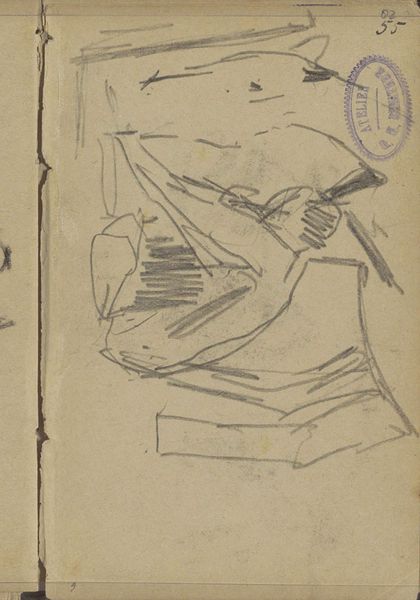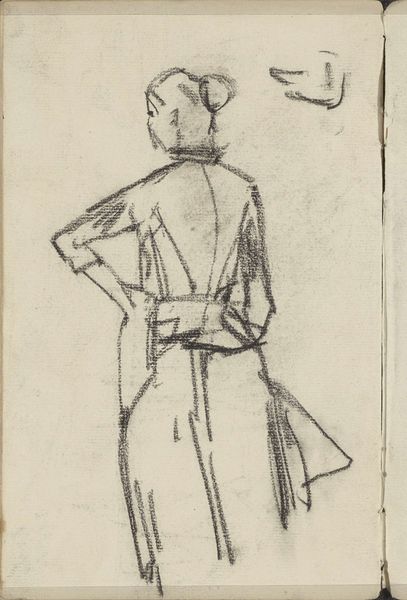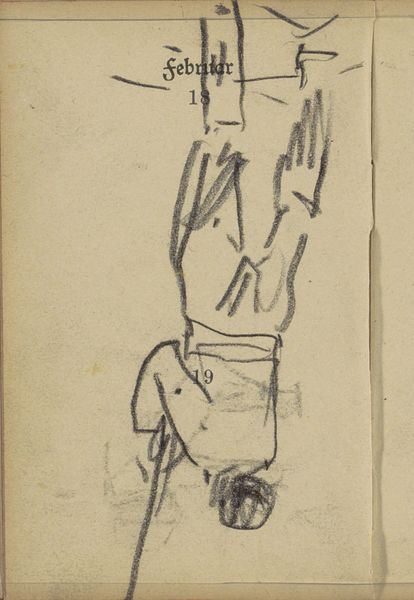
Copyright: Rijks Museum: Open Domain
Editor: Breitner’s “Standing Woman,” created in 1893, is a pencil drawing on paper and is currently housed in the Rijksmuseum. It has such a fleeting, almost dreamlike quality to it. What sort of impression does it leave on you? Curator: The dreamlike quality is key. Note how the minimal lines construct not just a woman, but an echo of a woman, a phantom in the quick-moving currents of modern life. What attire do you notice, and what cultural memory might that unlock? Editor: It looks like a simple cap. Does it reference any particular… class, perhaps? Curator: Precisely. The cap, along with her posture, points to domestic service, labor. But look closer at the almost childlike rendering. Breitner captures not just her social role, but the vulnerability inherent in it. What symbolic weight do you see in the averted gaze, the averted face? Editor: Perhaps a lack of agency, a turning away from direct engagement with the viewer… Curator: It evokes not just individual reticence but a broader social invisibility, a reluctance—or perhaps an inability—to fully participate in the gaze of the dominant culture. It is in that interplay between the immediate image and the larger symbolic field, the broader field of cultural memory that this work gains power. Editor: I see how the simplicity of the line work amplifies those meanings. The sketch becomes almost an anthropological study. Curator: Yes! Breitner uses the quickness of impressionism not for mere aesthetics, but to hint at layers of cultural understanding, unveiling silent narratives within society. We now realize how simple drawings, when studied closely, are never quite that simple.
Comments
No comments
Be the first to comment and join the conversation on the ultimate creative platform.
